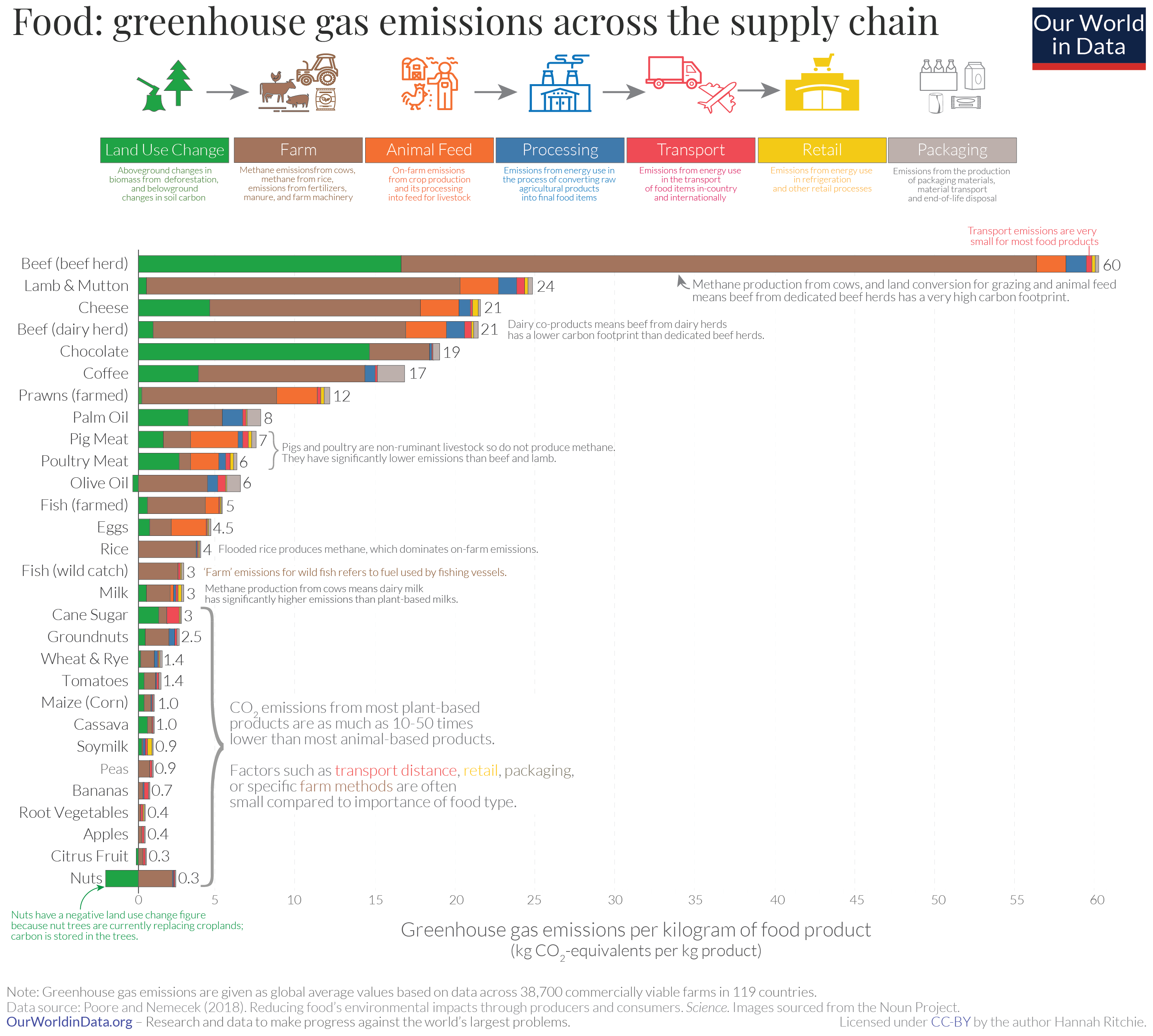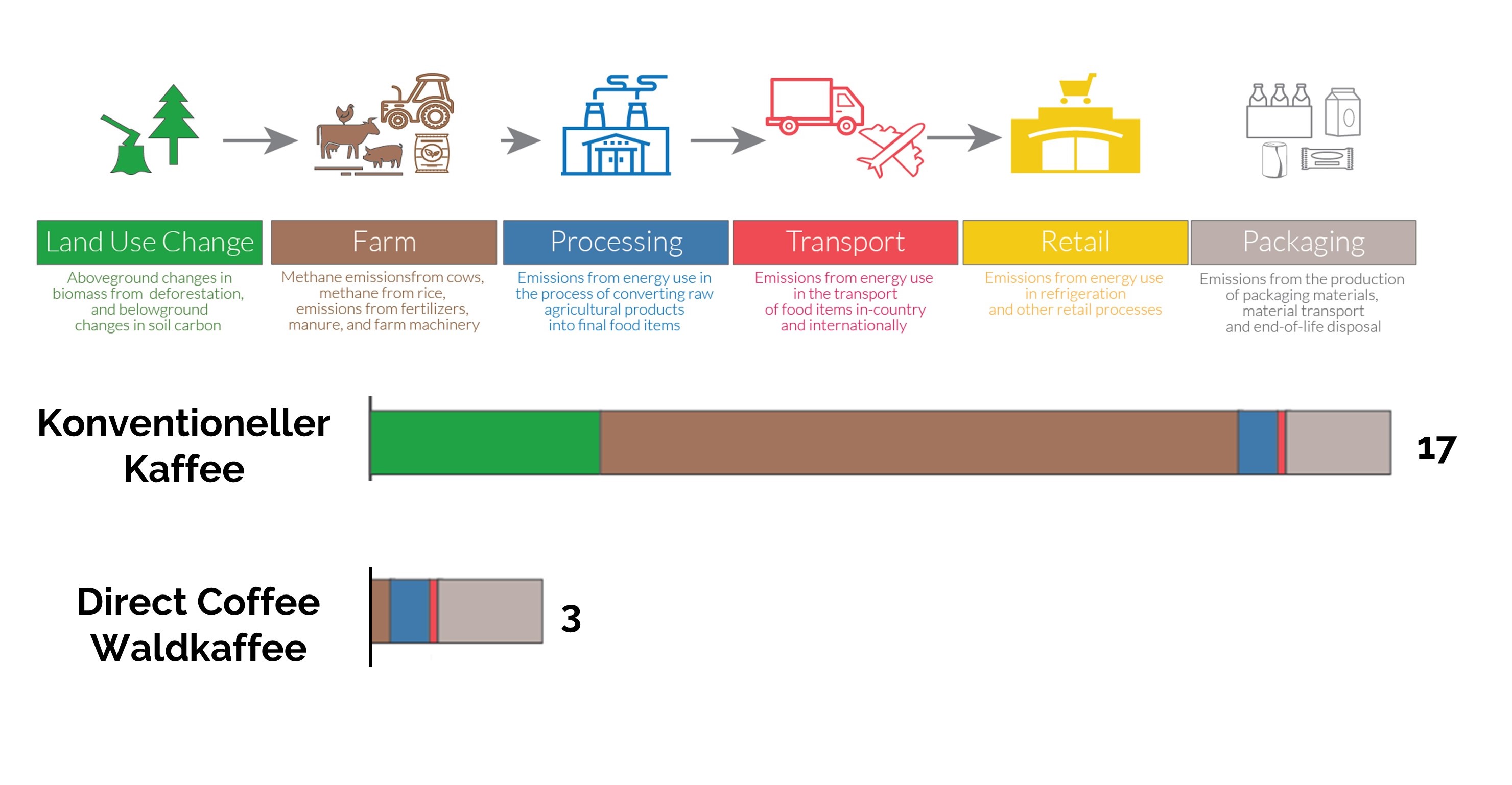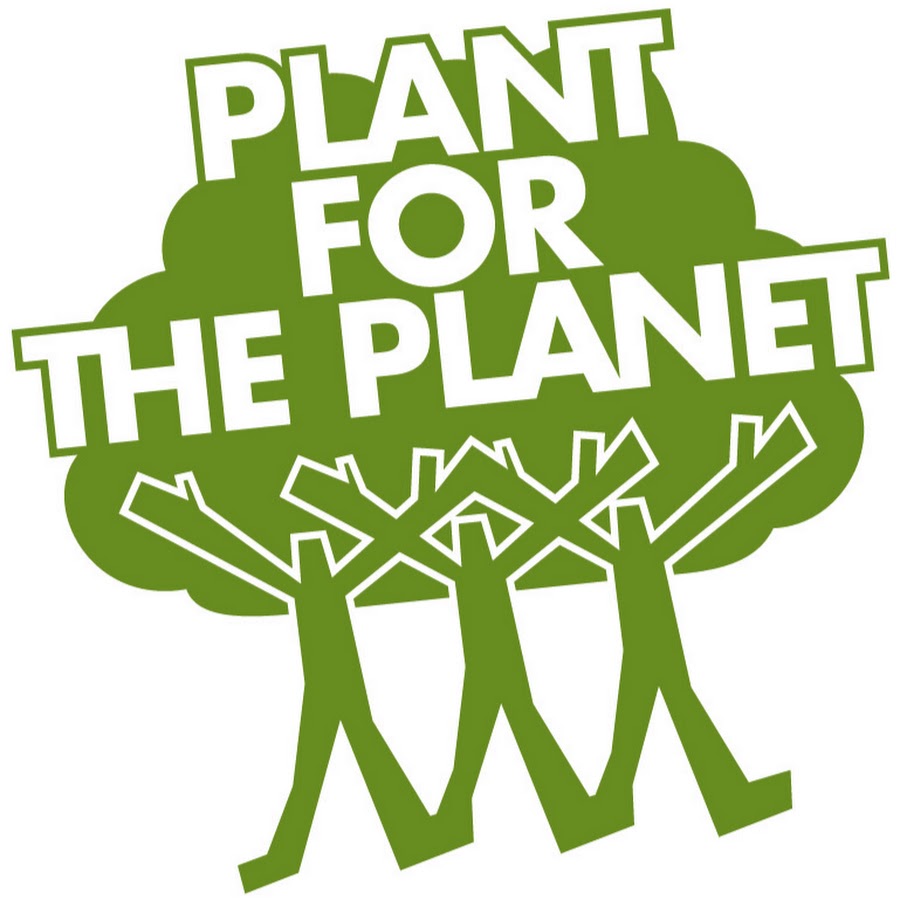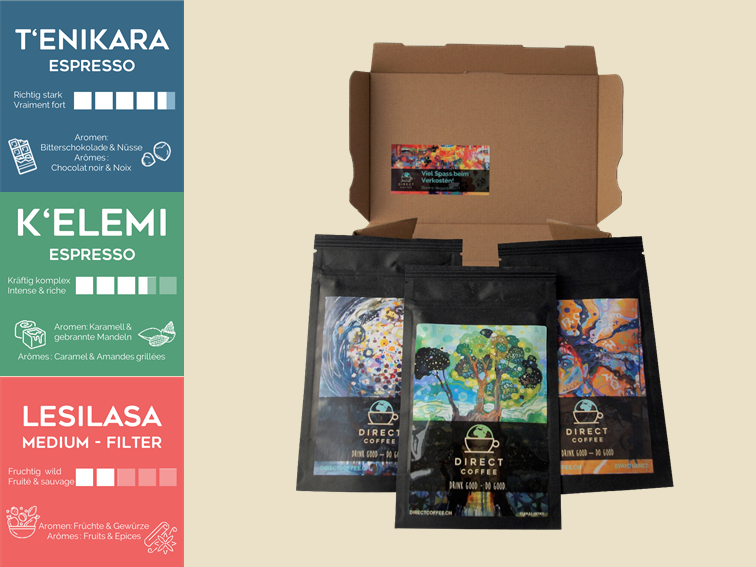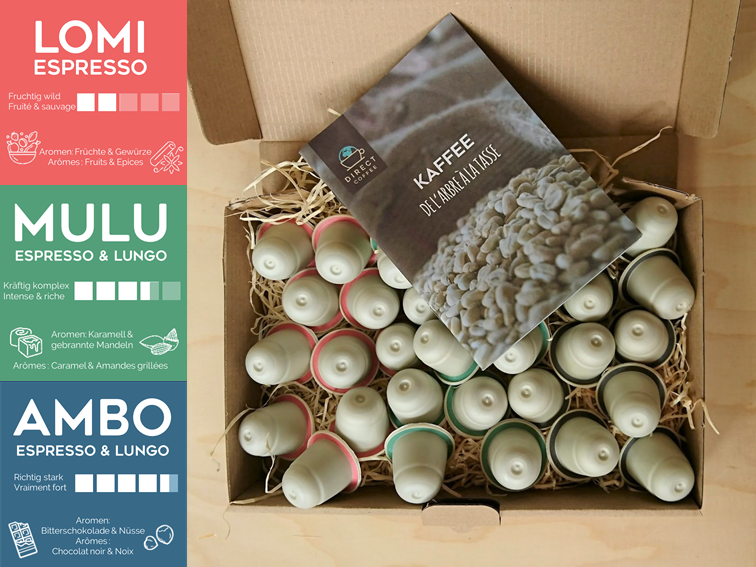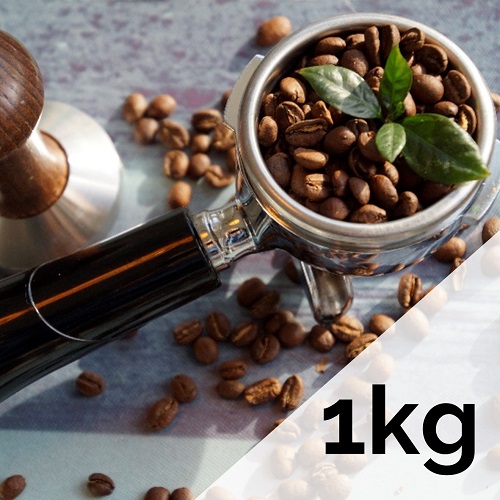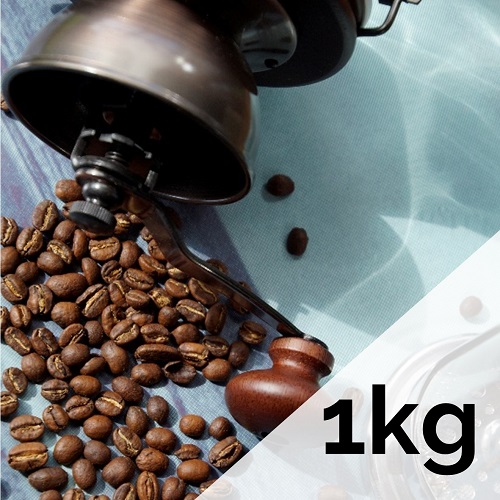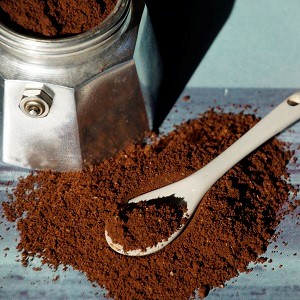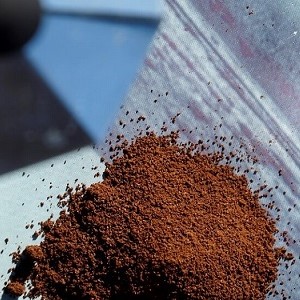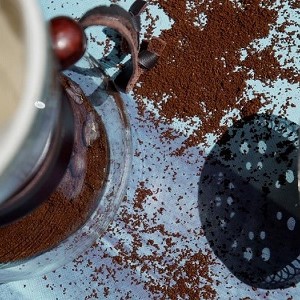Climate change concerns us all.
That’s why we reduce the footprint of our coffee as much as possible – and compensate the rest.
We’re planting trees in the dry regions of Ethiopia. And by that contribute to the development of these regions.
Doing good can be so easy!
Conventional coffee & Climate
After red meat, conventionally grown coffee is one of the most climate problematic foods we consume. The graphic shows it: Conventional coffee is even worse than chicken and pork! At least per kg. The data comes from a meta-study published in the scientific journal Science.
The data highlights one aspect: cultivation is the most important factor in climate friendliness. What was previously grown on the land (often rainforest) and how the coffee is grown is responsible for around 85% of the greenhouse gas emissions of conventional coffee. To a large extent, this is also true for organic coffee, for which rainforests have had to make way, as for example in Brazil.
The graphic is in general extremely exciting & instructive. In any case, it has already had a strong influence on our personal purchasing decisions as a team!
Conventional coffee & Climate
After red meat, conventionally grown coffee is one of the most climate problematic foods we consume. The graphic shows it: Conventional coffee is even worse than chicken and pork! At least per kg. The data comes from a meta-study published in the scientific journal Science.
The data highlights one aspect: cultivation is the most important factor in climate friendliness. What was previously grown on the land (often rainforest) and how the coffee is grown is responsible for around 85% of the greenhouse gas emissions of conventional coffee. To a large extent, this is also true for organic coffee, for which rainforests have had to make way, as for example in Brazil.
The graphic is in general extremely exciting & instructive. In any case, it has already had a strong influence on our personal purchasing decisions as a team!
Naturally climate-friendly
Compensation is important – but our first goal is the reduction of the negative environmental effects of our coffee. Fortunately, the smallholder farmers in Ethiopia make it very easy for us: they grow the forest amidst the original mountain forests. Instead of clearing the age-old forest, they protect it. And as the arabica coffee tree is feeling good as a bug in a rug in its natural ecosystem, it needs neither irrigation nor chemicals. On top of that, the coffee producers pick the coffee by hand. Big machines cannot be used in the dense forest.
That means: No greenhouse gases due to “land use change”.
And the “farming” of our coffee is also very climate friendly. The producers use donkeys to transport the coffee cherries. Only during the cleaning of the coffee washing water emissions arise. The dried coffee cherry shells are given back to the ground.
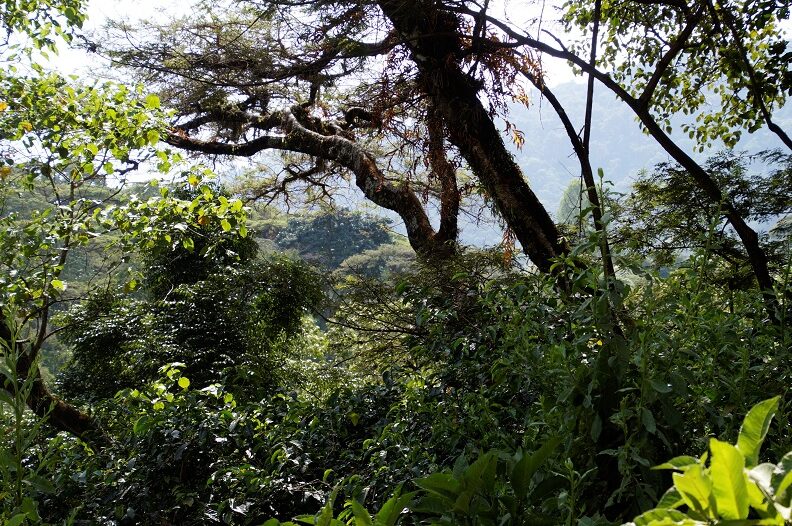
Less than a fifth of the emissions
According to our calculations, the climate balance of our coffee is 3kg per kg roasted coffee. We use the same values as for conventional coffee for packaging, transport, retail and packaging.
But in fact we’re looking for climate-friendly solutions in every step of our value chain. Our coffee is transported by ship to Basel – because airfreight and trucks have a worse greenhouse gas balance. We also use environmentally friendly packaging without aluminium that saves energy in the production process. The Swiss Post shipping and the production of our compostable capsules is CO2-compensated.
So there’s a good chance that the 3kg are even higher than the true foot print of our coffee.
Less than a fifth of the emissions
According to our calculations, the climate balance of our coffee is 3kg per kg roasted coffee. We use the same values as for conventional coffee for packaging, transport, retail and packaging.
But in fact we’re looking for climate-friendly solutions in every step of our value chain. Our coffee is transported by ship to Basel – because airfreight and trucks have a worse greenhouse gas balance. We also use environmentally friendly packaging without aluminium that saves energy in the production process. The Swiss Post shipping and the production of our compostable capsules is CO2-compensated.
So there’s a good chance that the 3kg are even higher than the true foot print of our coffee.
Compensation
We compensate what we cannot reduce.
We’re working with the organisation Plant for the Planet, with whom you can also very easily plant trees if you want! With our help Ethiopian youth groups plant trees, open up new sources of income and create forest corridors between intact forest areas at the same time.
We assume that one tree sequesters 12.5kg CO2 per year and that our footprint should be compensated after two years. If you presuppose that the trees continue growing after these two years – your coffee is even CO2-negative (meaning taking more CO2 from the athmosphere than adding to it!).
By the way: If you look at the climate balance of a cup of coffee more than half of the foot print lies in your hands – the drinker. The easiest trick to reduce is to reuse your cup of coffee during the day without cleaning it. And if you want to compensate: Plant for the planet is only one option.
